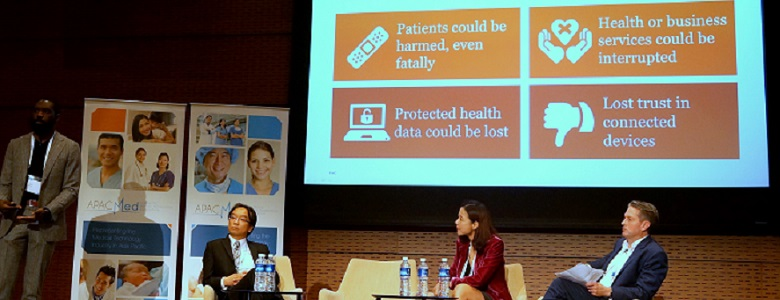The new team sport of Data Science

Image credit: Microsoft Singapore
It takes teamwork to win in football and basketball – and in data too.
Data science is a team sport, and companies should harness the knowledge of many parties to enable impact.
So said Ms Jessica Tan, Managing Director of Microsoft Singapore.
“While data is a very important asset, the possibilities of data dividend for any organisation or society is when we stop acting in our silos,” she said.
Ms Tan was delivering a keynote speech at the Machine Learning & Data Science Summit Singapore, jointly organised by Microsoft Singapore, the Government Technology Agency of Singapore (GovTech) and the National University of Singapore (NUS), and held at University Town, NUS on 9 December 2016.
Mr Chan Cheow Hoe, Government Chief Information Officer and Deputy Chief Executive of GovTech, and Professor Lakshminarayanan Samavedham, Master of Residential College 4 at NUS, were also keynote speakers.
As expected, Data was all the rage at the Summit.
Mr Chan spoke about the use of data science in the public sector in Singapore, and also shared with the crowd a real-life, data-driven solution to the recent Circle Line disruptions.
Professor Lakshminarayanan, on the other hand, introduced the work that Residential College 4 is doing on systems thinking and design, and its relevance to the data science community.
Over the course of the one-day summit, attendees enjoyed talks and hands-on tutorials that showcased how machine learning and artificial intelligence technologies are helping to build an intelligent world.
The event also featured a hackathon, where participants built machine-learning solutions — using the Microsoft Cortana Intelligence Suite — to predict the number of fatalities in traffic accidents in which drunk drivers played a role.
(Editor: GovTech’s very own DevOps Engineer, Lim Zui Young, emerged runner-up in the Hackathon.)
Transforming digitally
The topic of digital transformation was also prominent in Ms Tan’s keynote speech.
She described four areas in which businesses can experience an impact when they embrace digital transformation.
Transforming products and business models is one of them, with Rolls-Royce being a good example.
According to Ms Tan, Rolls-Royce is known as the company that builds engines, but in the last few years, the company has gone beyond that.
From the reams of data and intelligence collected, the company is not only offering airlines dashboards of information, but also helping them to visualise the data and make better decisions
Similarly, businesses may optimise their operations through the use of data, not only to reduce costs but also increase productivity or develop new services that their clients need.
JTC Corporation, for example, is using intelligence to reduce energy consumption in the buildings they operate and at the same time, improve the tenant experience, Ms Tan shared.
Buildings that were once constructed as system silos where air conditioning, elevators and lighting were planned and managed separately, are now being redesigned in a more holistic way.
And it’s greener too.
Companies like JTC are now using these new integrated solutions to gain improved building management insights that, for example, can result in tweaks to air conditioning systems leading to more efficient air flow and reduced cooling costs.
Also, by leveraging data and technology, businesses may also empower their employees and allow them to perform even better, Ms Tan said.
For example, DBS Bank is using Microsoft’s collaborative services to enable their employees to connect with each other and share ideas.
Driving Change
And finally, businesses are also using data and technology to engage with their customer, with the aim of improving their experience, she said.
Here, real estate developer CapitaLand Limited has been using conversational intelligence to interact better with their customers.
Another interesting case study is Uber’s recent project where the ridesharing company worked with Microsoft to enhance the experience of Uber drivers and passengers through digital transformation.
Uber has introduced Real-Time ID Check, an additional security feature that periodically prompts drivers to share a selfie with Uber before they start accepting ride requests.
The feature uses Microsoft Cognitive Services intelligence to instantly compare the selfie with the driver’s photo on file. If the photos do not match, the driver’s account is temporarily deactivated while Uber looks into the situation.
“In Uber’s case, digital transformation not only boosts safety and security for drivers and passengers, but also enables new possibilities and experiences,” Ms Tan noted.
“It’s an example of bringing different capabilities together, and with a deep understanding of the service, to be able to say, ‘How do we make it better?’”
But the goal is not to implement sexy, new technologies, Ms Tan pointed out, but introducing new features that actually hold real value and benefit for those involved.
Ms Tan ended by sharing a quote from Microsoft CEO Satya Nadella that can possibly apply to sports teams too: “When you change the way you see the world, you change the world you see.”


